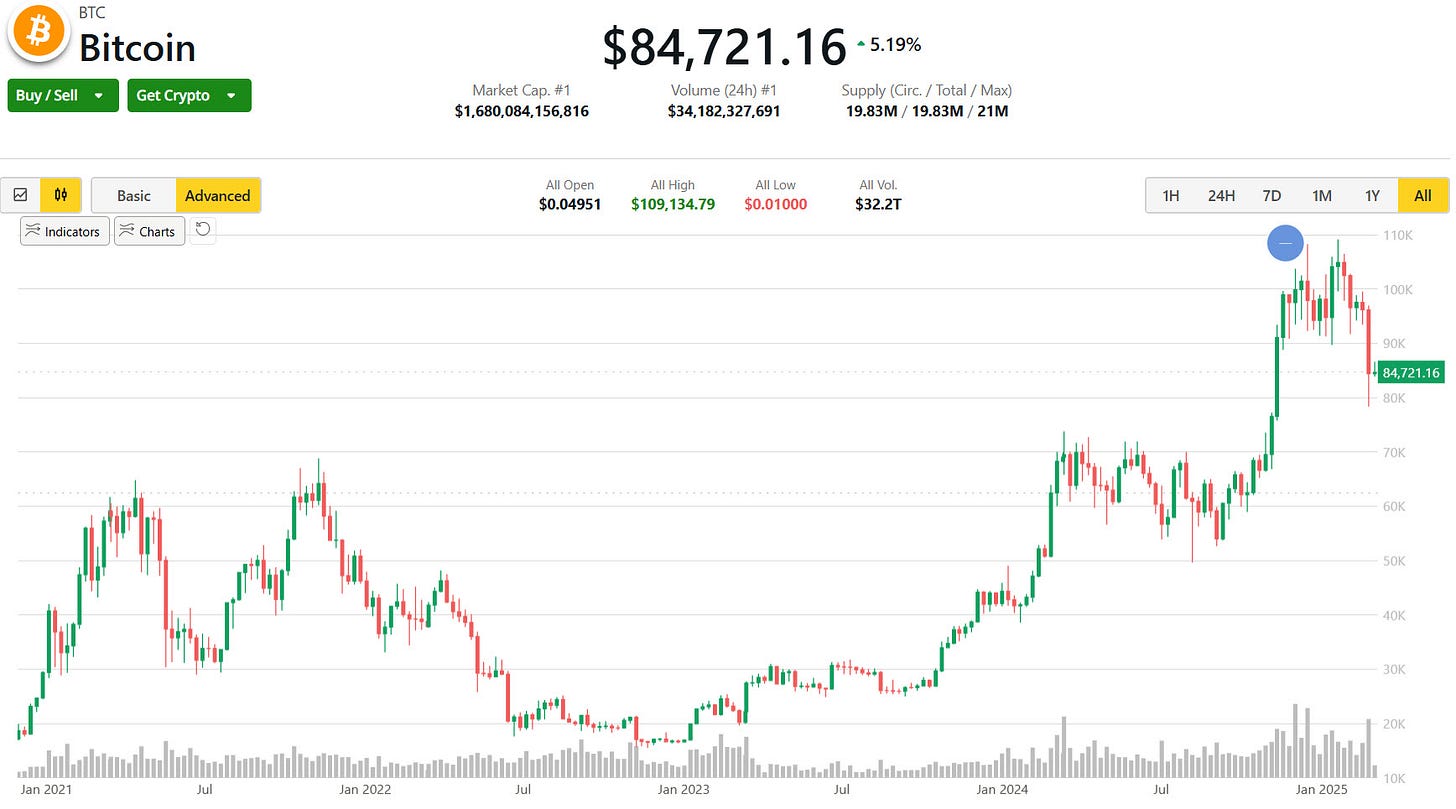Some years ago, Bitcoin became an investable asset. While there’s much more to crypto than Bitcoin, one needn’t go any further to gain exposure to a non-government currency and digital store of value.
There are two sides to Bitcoin and blockchain technology: the store of value, as in “digital gold,” and transactional value, as in “crypto rails.”
If you want to go deeper into Bitcoin, I recommend Lyn Alden, who does a good job contextualizing Bitcoin with overall liquidity and macro. She also wrote a book about it.
Recent volatility aside, the long-term view is unchanged, but recent developments have shown greater adoption of the transactional side of the story.
Store of Value
Fiat currency like the dollar depreciates over time. In developed economies, it tends to be slow, but can accelerate due to events like COVID, deficits, and monetary policy decisions. A dozen eggs cost much more in dollars than a year ago but are cheaper in terms of Bitcoin.
There’s another strong argument outside of developed economies where there is not only depreciation but no rule of law and the risk of confiscation. People in these countries rely on Bitcoin. It’s also easier to move around than gold bars.
Higher interest rates on the USD help to offset the erosion of value but are ground down by persistent inflation and government spending.
The recent abrupt price move from $60K to $100K was stoked in no small part to an expansion of ETF exposure, the MicroStrategy MSTR 0.00%↑ high wire act, and very crypto-friendly rhetoric from the incoming Trump administration.
Unfortunately, every positive move in a fundamentally sound asset like Bitcoin seems to kick off a riot of pump and dump schemes like Fartcoin which all feature theft and an eventual “rug pull” ending. These tend to peter out but contribute to the view that Bitcoin is also a scheme or a scam, which it is not. (Or at least not more so than the USD and the people who control monetary policy.)
When it was clear that Bitcoin would be an institutional asset, I allocated 10% of my liquid portfolio to BTC and BTC-related equity like Coinbase $COIN.
For the same reasons I do something quite similar with Gold and a handful of gold equities.
One doesn’t really *need* to do it if you own asset-rich companies and ones with profitable growth - they can offset currency depreciation with higher valuations and earnings.
Crypto Rails
There’s not much written in the press about it, but the adoption of crypto payment rails is becoming more mainstream.
Traditional credit cards and networks like Visa V 0.00%↑ are not going away. They are dominant, convenient, and consumers have grown to love rewards. (I don’t quite understand why.)
The 3% fee provides some impetus for online and offline merchants to be open to crypto payments as long as they can be easily converted to dollars. Stablecoins are becoming more and more popular.
Mercants can do the math and companies like Coinbase are getting more aggressive at marketing their solution.
Consumers love their rewards, but some merchants, particularly of the “brick and mortar” variety, charge them for the privilege. Bringing a wad of cash to your local restaurant is cumbersome but paying a 3% or sometimes 4% fee makes the idea of “rewards” less satisfying.
Volatility
Bitcoin is subject to the same global liquidity forces as other asset classes. The price changes can be a distraction to the long-term prospects of the asset as a store of value and the increasing acceptance of use in transactions.
In the near-term I don’t know if Bitcoin will go back to $60K or hit new highs over $100K. I am smart enough to maintain my allocations though.




